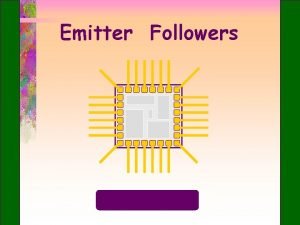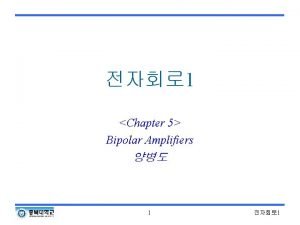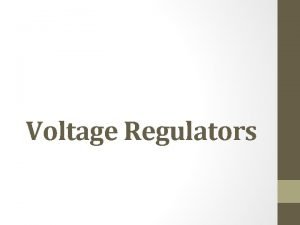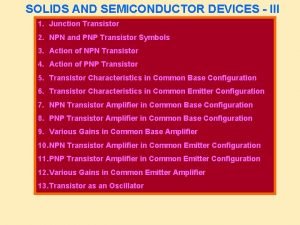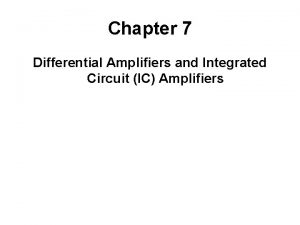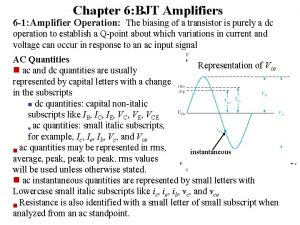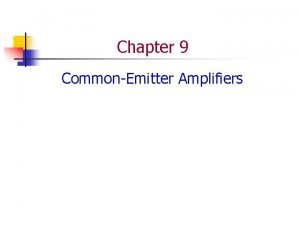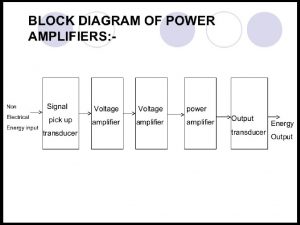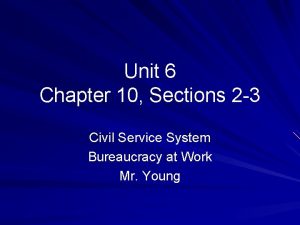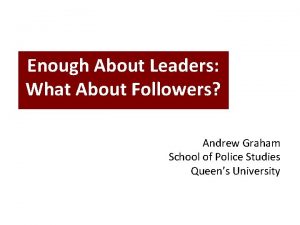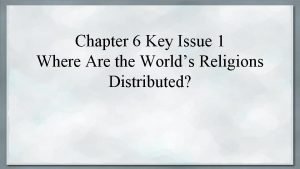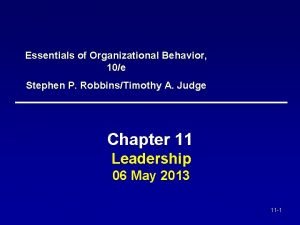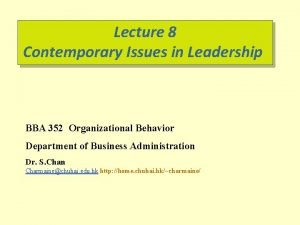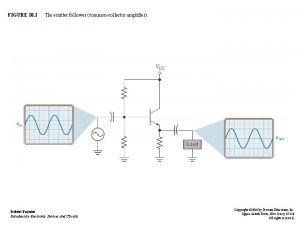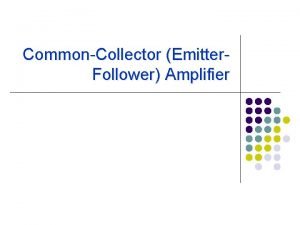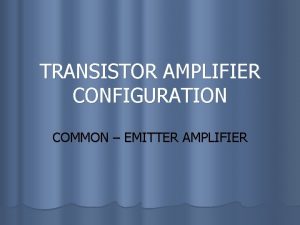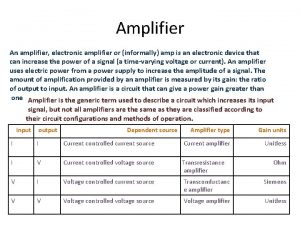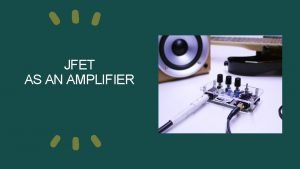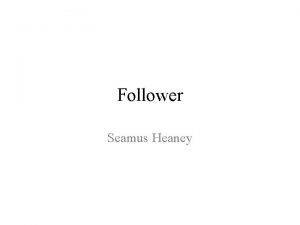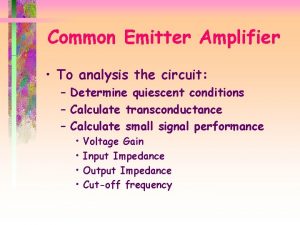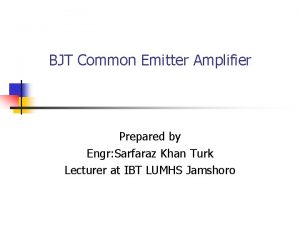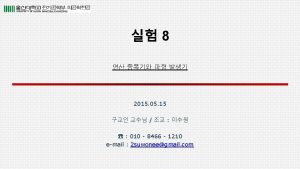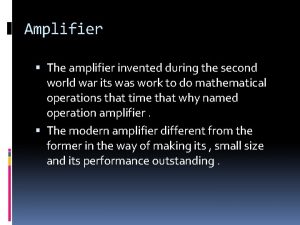Emitter Followers The commoncollector or emitter follower amplifier




















- Slides: 20

Emitter Followers

The common-collector or emitter follower amplifier +VCC R 1 vin R 2 ac ground RE RL vout

T model of the emitter follower amplifier r e = R E RL vin R 1 R 2 vin= ie(re + re’) r e’ re A= r e + r e’ re vout = iere

p model of the emitter follower amplifier zin(stage) = R 1 R 2 b(re + re’) vin R 1 R 2 b(re + re’) re vout

The output side of a common-emitter amplifier Applying Thevenin’s theorem: RC RC RL vth The output impedance is equal to RC. RL

T model of the emitter follower amplifier Apply Thevenin’s theorem to point A: zout vth RG R 1 R 2 r e’ RL A RE A RL

Output impedance of the emitter follower amplifier zout = RE ( r e’ + R 1 R 2 RG b ) The current gain of the amplifier steps down the impedance of the base circuit. Thus, the output impedance of this amplifier is small.

The dc load line IC in m. A 14 12 10 8 6 4 2 100 m. A 80 m. A 60 m. A 40 m. A Q 20 m. A VCC 0 2 4 6 8 10 12 14 16 18 VCE in Volts IC(sat) = VCE(cutoff) = VCC RE The ac load line has a higher slope: re = RE RL

Large signal operation • When the Q point is at the center of the dc load line, the signal cannot use all of the ac load line without clipping. • MPP < VCC • MP = ICQre or VCEQ (whichever is smaller) • MPP = 2 MP • When the Q point is at the center of the ac load line: ICQre = VCEQ

Darlington connection Q 1 Q 2 b = b 1 b 2 Darlington transistor

Push-pull emitter follower +VCC R 1 Q 1 When ison, When Q Q 21 is the capacitor discharges. R 2 vin R 3 Q 2 R 4 RL vout

Class B push-pull emitter follower • • ICQ = 0 VCEQ = VCC/2 MPP = VCC A @ 1 • zin(base) = b RL • PD(max) = MPP 2/40 RL (each transistor) 2 • pout(max) = MPP /8 RL

Crossover distortion in class B +VCC R 1 Q 1 R 2 vin R 3 Q 2 R 4 RL vout

Class AB • Crossover distortion is caused by the barrier potential of the emitter diodes. • ICQ must be increased to 1 to 5 percent of IC(sat) to eliminate crossover distortion. • The new operating point is between class A and B but is much closer to B.

Thermal runaway • When temperature increases, collector current increases. • More current produces more heat. • Compensating diodes that match the VBE curves of the transistors are often used. • Any increase in temperature reduces the bias developed across the diodes.

Diode bias R 2 VBE VCC - 2 VBE Ibias = 2 R +VCC IC(sat) = 2 RL IC(sat) ICQ @ Ibias Iav = p Idc(total) = ICQ + Iav RL vin R Pdc(in) = VCCIdc(total) VCC 2 pout(max) = 8 RL pout x 100% h= Pdc

Direct-coupled common emitter driver R 3 AQ 1 @ R 4 +VCC R 1 R 3 Q 2 Q 3 vin Q 1 R 2 R 4 RL

Two-stage negative feedback R 2 provides both +VCC dc and ac negative R 1 feedback Q 2 to stabilize the bias and the voltage Q 3 gain. Q 1 vin R 2

Zener follower +VCC Vout = VZ - VBE RS IB = Iout bdc zout = re’ + VZ RL Vout RZ bdc

Two-transistor voltage regulator R 3 + R 4 (VZ + VBE) Vout = R 4 +Vin R 1 R 2 Q 2 R 3 Q 1 VZ RL R 4 Vout
 Emmiter follower
Emmiter follower Q point bjt
Q point bjt Voltage regulator
Voltage regulator Pnp common emitter amplifier
Pnp common emitter amplifier Emitter coupled differential amplifier
Emitter coupled differential amplifier Amplifier gain
Amplifier gain The emitter of a swamped amplifier
The emitter of a swamped amplifier Compare voltage amplifier and power amplifier
Compare voltage amplifier and power amplifier Military industrial complex
Military industrial complex How do charismatic leaders influence followers
How do charismatic leaders influence followers Kellerman's typology of followers
Kellerman's typology of followers Followers of islam
Followers of islam The world's largest universalizing religion is
The world's largest universalizing religion is Alienated followers
Alienated followers Followers of siddhartha gautama
Followers of siddhartha gautama Why do prince prospero and his followers retreat
Why do prince prospero and his followers retreat Houses path goal theory
Houses path goal theory How do charismatic leaders influence followers
How do charismatic leaders influence followers What ideas of jesus attracted followers
What ideas of jesus attracted followers A good leader will have followers who ______.
A good leader will have followers who ______. Contemporary leadership roles
Contemporary leadership roles
